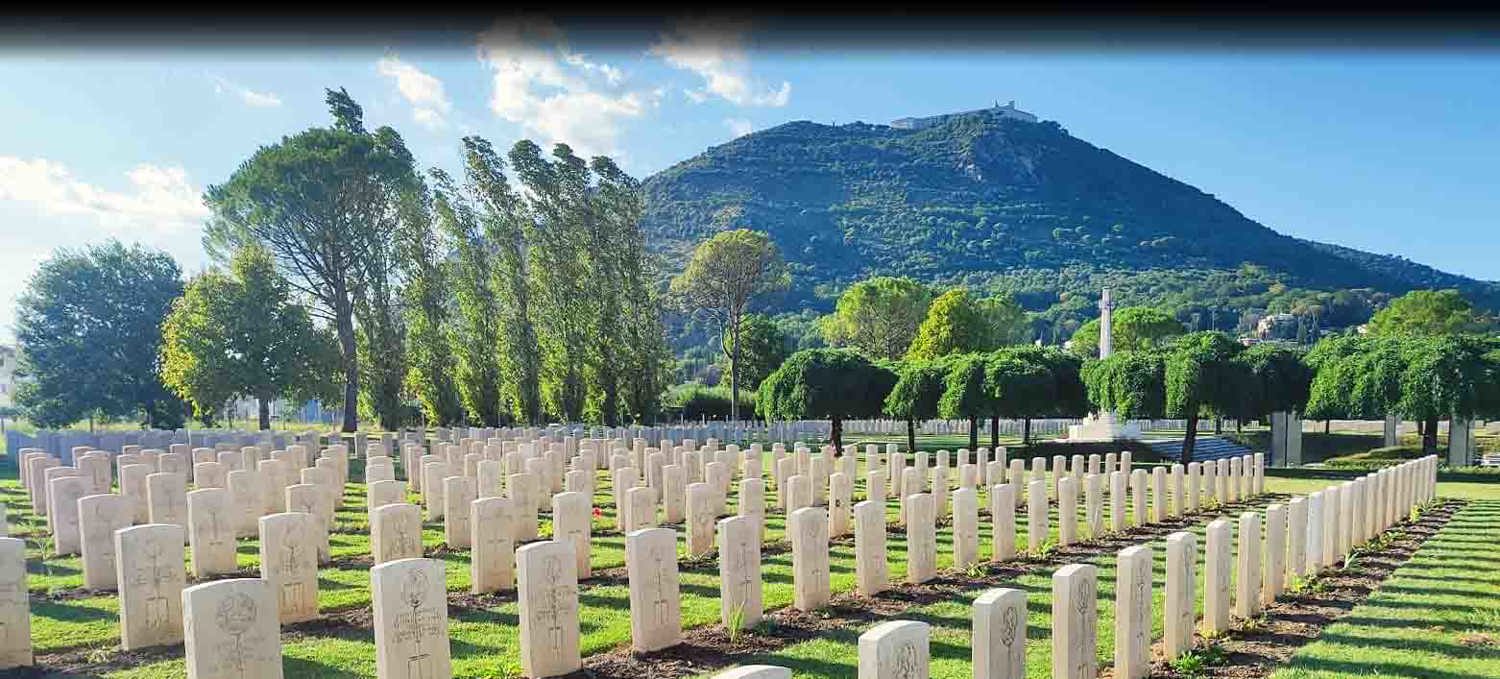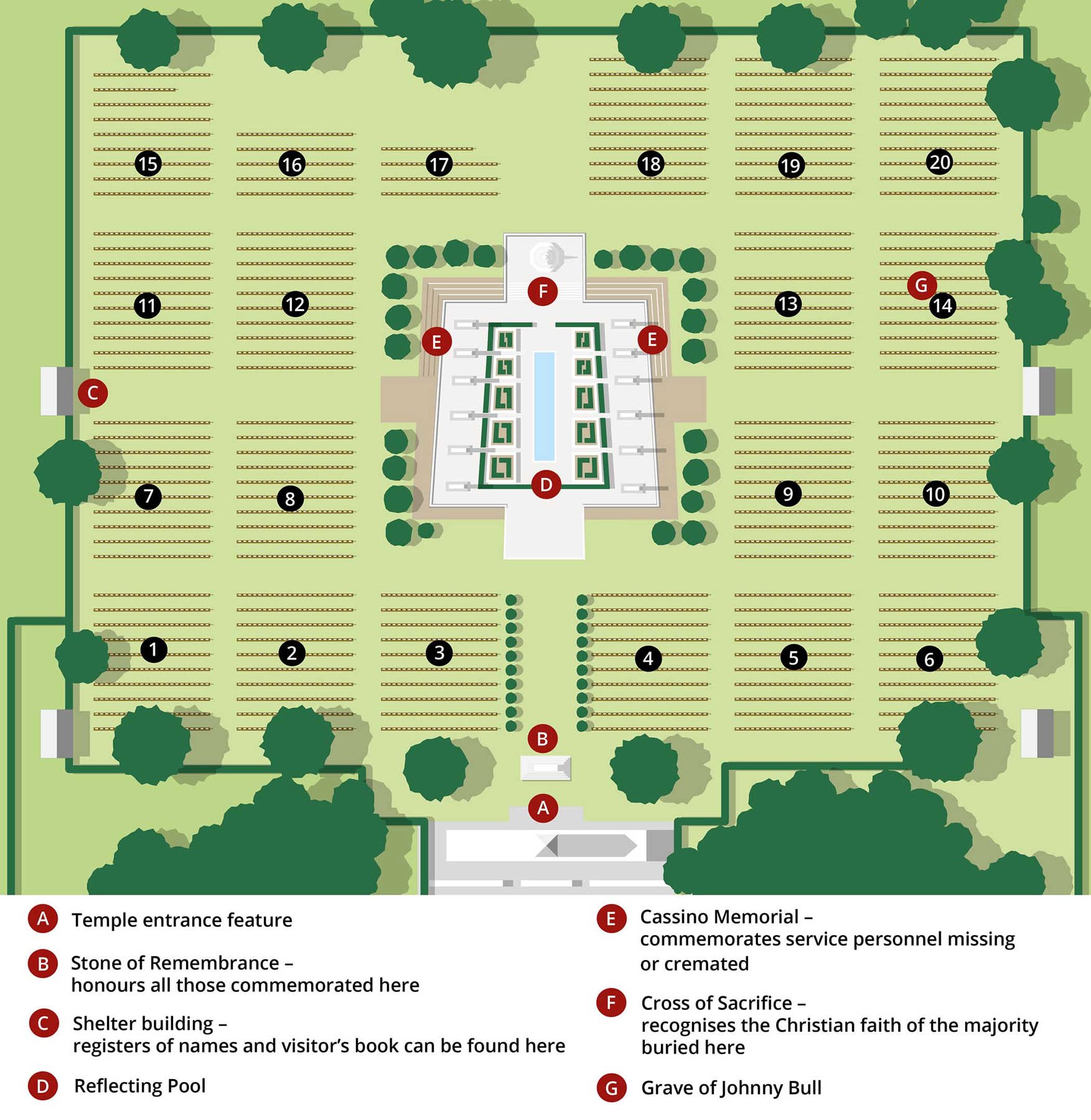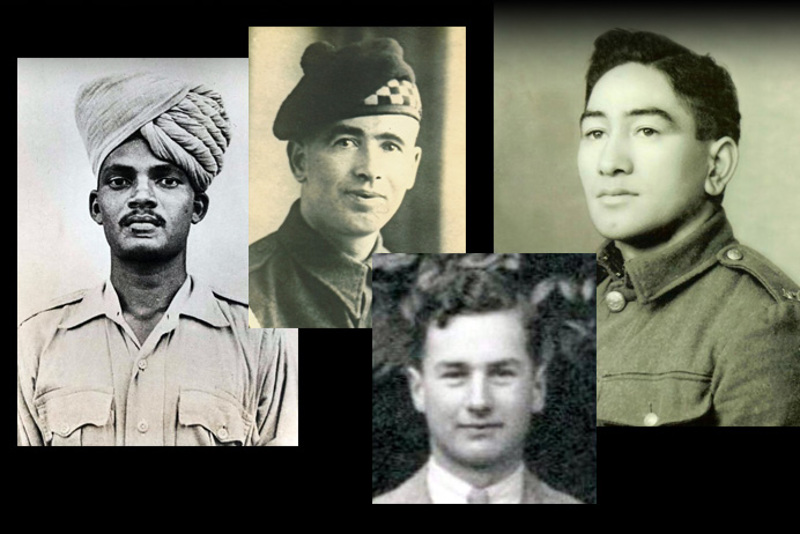
Commemorating the fallen of the Italian Campaign

The cemeteries and memorials in Italy cared for by the Commonwealth War Graves Commission are some of the most beautiful in the world. They are a permanent reminder of the bitterly fought campaign which raged across the country during the Second World War.
Over the course of the fighting in Italy, German forces suffered around 435,000 casualties, killed, wounded, and captured, while the Allies lost some 311,000, including 123,000 Commonwealth servicemen fighting as part of the British Eighth Army.
Today, the Commonwealth War Graves Commission commemorates 45,000 Commonwealth servicemen in Italy who died during the campaign. More than 30 beautiful cemeteries were constructed as their final resting places.

Cassino War Cemetery and Memorial

The location for Cassino War Cemetery was selected in January 1944, but it was not until after the end of hostilities that it could be used.
It is the final resting place of nearly 4,300 Commonwealth servicemen including 300 who remain unidentified, the majority of whom fell in the first five months of 1944.
At the heart of the cemetery is the Cassino Memorial, which commemorates by name some 4,000 Commonwealth servicemen who fought in Sicily and Italy and have no known grave.
Both the cemetery and memorial were designed by Louis de Soissons, the Commission’s principal architect for Italy.
Born in Montreal, Canada, in 1890, he was raised in London and trained in Paris and Rome. His work was greatly influenced by the architecture he saw during his time in Italy. He designed more than 40 CWGC cemeteries in Greece and Italy, and two memorials to the missing – one at Cassino, and the Athens Memorial in Phaleron War Cemetery, Greece.
De Soissons had a son, Philip, who served in the Royal Navy during the war. On 23 May 1941 Philip was killed when his ship, HMS Fiji, was sunk by German bombers off the coast of Crete. Along with over 220 of his shipmates, he has no grave but the sea, and his name is inscribed on the CWGC’s Portsmouth Naval Memorial. Philip de Soissons was just 17 years old when he died.

Sangro River War Cemetery and the Sangro River Cremation Memorial

Most of those buried here died in the fighting on the Adriatic coast, but the cemetery also contains the graves of a number of prisoners of war who died while trying to escape to the Allied lines. Today it contains over 2,600 Commonwealth Second World War graves.
Within the cemetery is the Sangro River Cremation Memorial, one of three memorials erected in Italy to officers and men of the Indian forces whose remains were cremated in accordance with their faith - the other two cremation memorials are in Forli Indian Army War Cemetery and Rimini Gurkha War Cemetery. The memorial at Sangro River commemorates more than 500 servicemen.
Minturno War Cemetery

Situated near the Gustav Line, the town of Minturno was liberated soon after Allied forces crossed the Garigliano River on 17 January 1944. The site for the cemetery was chosen at that time, but the Allies then lost some ground and the site came under German small-arms fire.
The cemetery could not be used again until May 1944, when the Allies launched their final advance on Rome and the US 85th and 88th Divisions were in this sector. The burials are mainly those of the heavy casualties incurred in crossing the Garigliano in January 1944. Minturno War Cemetery contains over 2,000 Commonwealth war graves of WW2.
Moro River Canadian War Cemetery

Fighting up the Adriatic coast, the 1st Canadian Division crossed the Moro River on 6 December 1943 against stiff opposition. They went on to take the town of Ortona on the 28 December, after a week of bitter street fighting with German Fallschirmjäger (paratroopers). While the fighting continued to the west at Cassino, there was virtually no movement east of the Apennines until after the fall of Rome.
The site of this cemetery was chosen by the Canadian Corps in January 1944, and it contains the graves of those who died during the fighting in the surrounding areas. Over 1,600 Commonwealth servicemen are buried here, and the majority served with Canadian forces.
Beach Head War Cemetery, Anzio

During Allied operations in the Anzio bridgehead, this site was a centre for medical care. British No. 2 Casualty Clearing Station (CCS) along with field surgical units and field ambulances operated here and began the cemetery now known as Beach Head. After the war, battlefield burials and graves from the surrounding country were brought here.
It is now the final resting place of more than 2,300 Commonwealth servicemen, the names of nearly 300 of whom remain unknown. Close to 1,500 of the soldiers, sailors and airmen buried here died during the defence of the Anzio bridgehead between February and May 1944, and more than 500 were killed during the breakout in late May.
Anzio War Cemetery

This site was chosen as a final resting place for Commonwealth servicemen shortly after the landings at Anzio on 22 January 1944, and nearly all of those buried here fell over the subsequent six weeks. The cemetery is now the final resting place of more than 1,050 Commonwealth soldiers, sailors and airmen, of whom 19 remain unidentified.

Help us keep alive the stories of those who died in the World Wars
A gift in your will can help us continue telling those stories for generations to come, so their sacrifice is not forgotten.

SHARE THE STORIES OF CASSINO AND THE ITALIAN CAMPAIGN
Visit For Evermore: Stories of the Fallen, our online commemorative resource to read and share the stories about some of the people involved in the Italian Campaign.
All images © IWM unless otherwise indicated.

